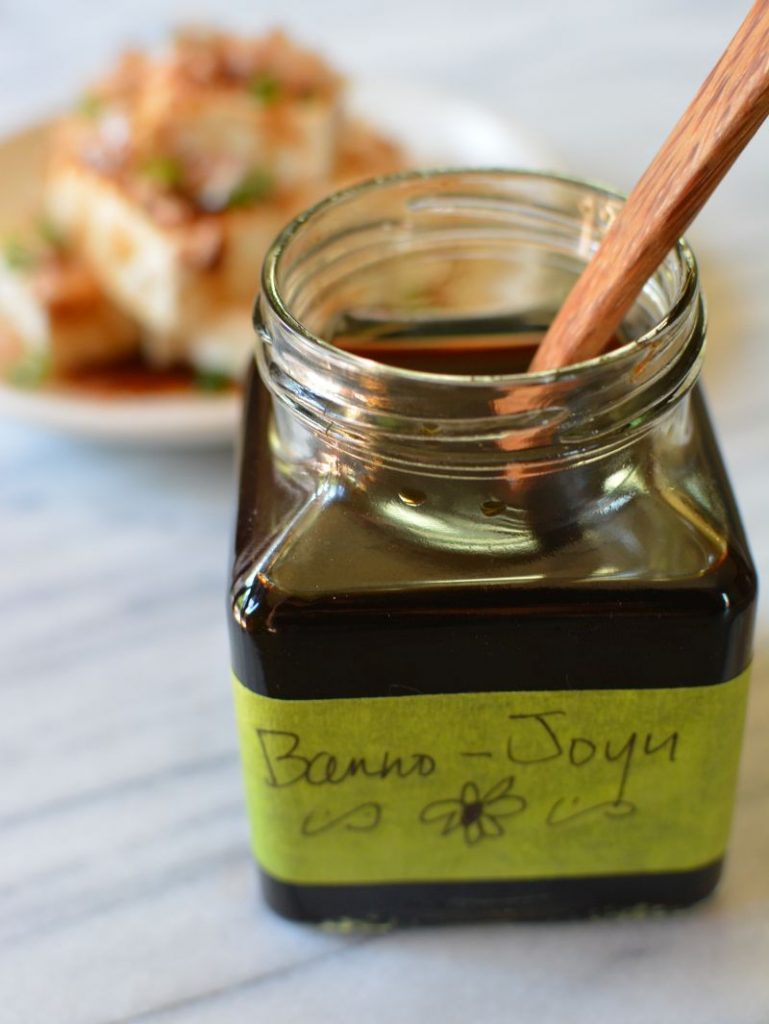
The Japanese excel at building umami -- savoriness, to allow simple foods to taste extra delicious. This easy-to-make condiment embodies just that. I learned about banno-joyu, which I call Japanese seasoned soy concentrate, while visiting with Elizabeth Andoh, one of the foremost experts on Japanese foodways. She's the consummate teacher and part of my field research for the Asian Tofu cookbook was spending time with her in Tokyo.
It was September 2010 and exceedingly humid, which meant I arrived at Elizabeth's home drowning in sweat. Thank goodness for air conditioning. She also had chilled tofu, purchased from her favorite tofu-ya (tofu maker/tofu shop). She reached into her pantry to procure soy sauce and also a small jar of this Japanese seasoned soy concentrate. Quietly, she opened in up and asked me to sniff. The dark liquid was smokey and smelled faintly salty sweet. She told me she made it.
Never had I thought of cooking up manipulating soy sauce to create a new condiment. In my Viet kitchen, it was just added to dishes as a savory accent. But she that afternoon, she taught me that you can use naturally occurring glutamates in ingredients like kombu (dried kelp), dried shiitake mushroom, and shoyu (soy sauce) to create super synergy.
The seasoned soy sauce amplified the tofu in a phenomenal way. Tofu, like many proteins, just needs to be paired with glutamic acids to create a big umami effect. The banno-joyu magically did that and I could barely stop eating the tofu.
Last week, I attended a conference at the Culinary Institute of America and two chefs from Tokyo spoke at length about Japan's tradition of building umami. Up until the late 1800s, meat was not widely eaten, explained chef Shinobu Namae of L'Effervescence, named one of Asia's best 50 restaurants and one of Asia's most sustainable restaurants, too. Coaxing out maximum flavor from ingredients became basic to Japanese culinary craftsmanship.
Elizabeth referred me to her recipe for banno-joyu in her landmark book, Washoku. She rightly pointed out that good, fresh tofu, should be treated simply to let it shine. Indeed, like freshly made cheese or bread, you need to dress it up minimally to enjoy it at its maximum.
I went several rounds to develop my own recipe, published in Asian Tofu. I don't use fancy kombu, just this affordable kind sold at many Asian markets and online. Use good dried shiitake. I favor ones with thick, crack-filled caps; here's a dried shiitake primer. If you have small ones, use more and let things soak overnight.
For the soy sauce, choose a Japanese or Korean soy sauce. Kikkoman from a regular supermarket is fine. BUT if you shop at a Japanese market like Mitsuwa, try a soy sauce made in Japan. Kikkoman has several that are fabulous but not often sold outside of Japanese store.
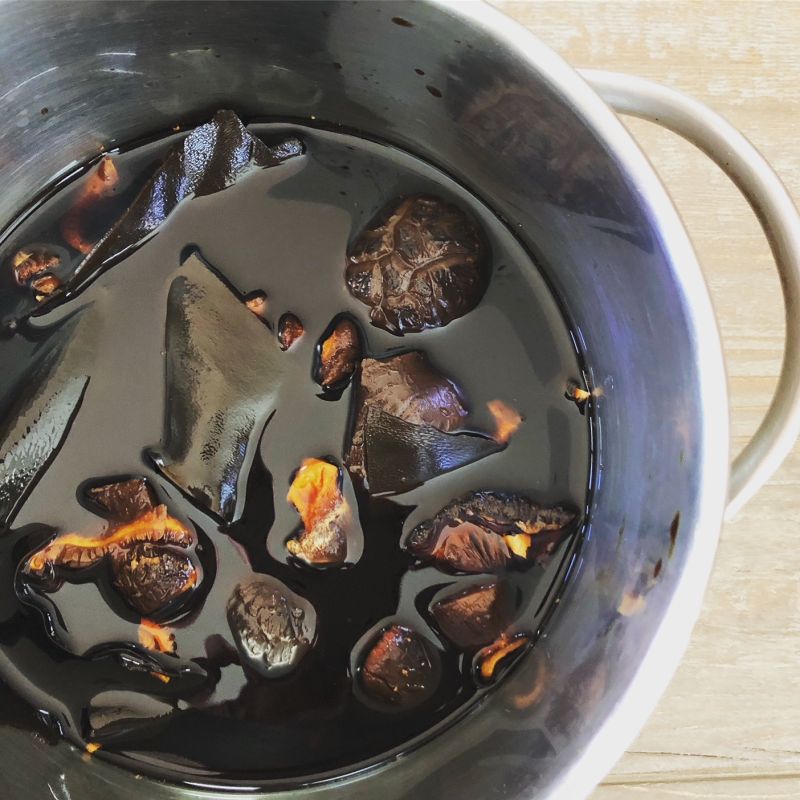
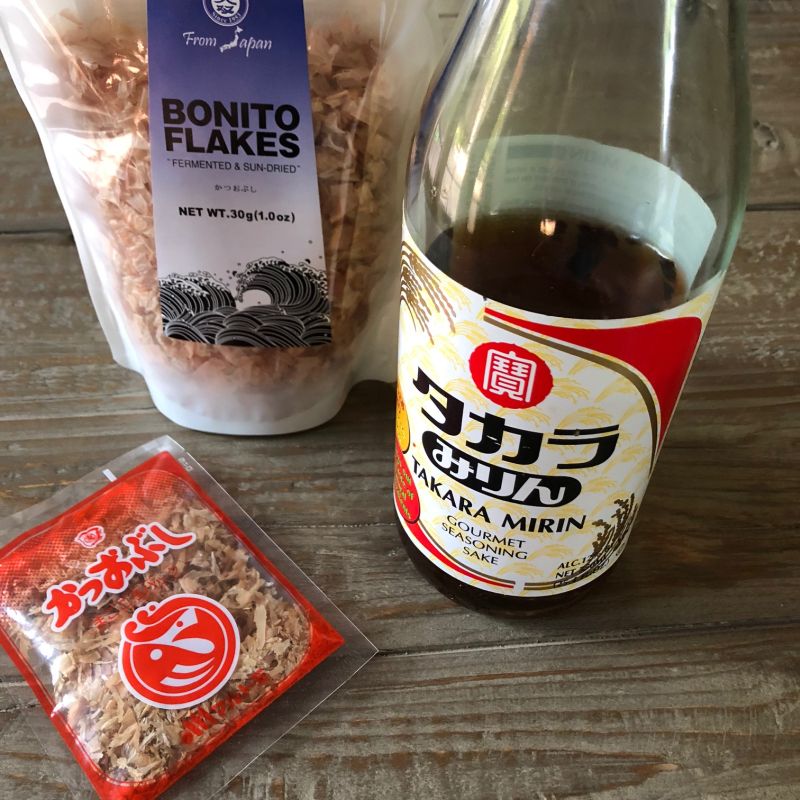
For the bonito flakes and mirin, my choice varies, but I use nothing expensive. Made in Berkeley, California, Takara mirin is about 12 percent alcohol. It's not sugar syrup. I bought it at Lion, a Chinese market in San Jose, which means you can find it elsewhere! Since you do not need much mirin, and you do need sake, make it yourself. Here's a mirin recipe from the VWK archives.
The Japanese seasoned soy concentrate lasts for six (6!) months in the fridge. I mostly use it straight to enjoy with tofu but you may also dilute it with water or dashi stock (make a quick broth for ramen or udon!) or add the inky magic seasoning to marinades.
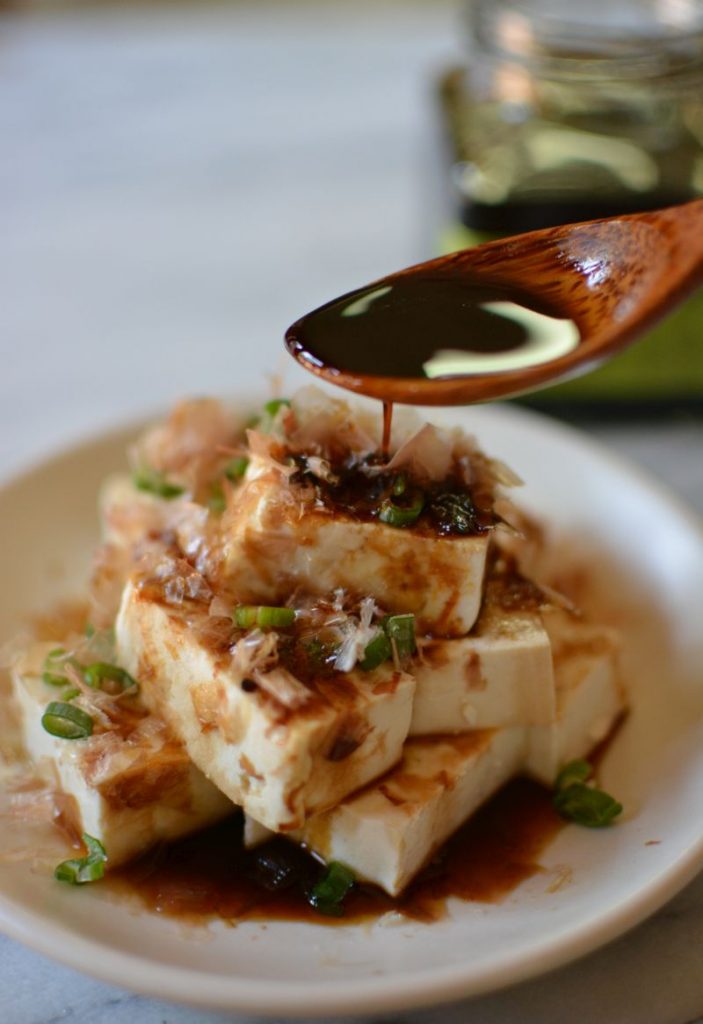
For a healthy amount of natural glutamates, soak the larger amount of dried kelp and a big, thick-capped shiitake mushroom. Want a vegan version of banno-joyu? Try this recipe.
Banno-joyu brings extra joy into your Asian dishes. Make a batch and keep it around!
Japanese Seasoned Soy Sauce (Banno-Joyu)
Yield ¾ cup
Use a gluten-free soy sauce if you're sensitive.
Ingredients
- 16 to 20 square inches dried kelp (kombu), cut into 3 or 4 pieces (use scissors)
- 1 large dried shiitake mushroom, cut into 5 or 6 pieces (use a cleaver)
- ⅔ cup Japanese or Korean soy sauce
- ⅓ cup sake
- 3 tablespoons water
- 3 tablespoons sugar
- 2 tablespoons mirin, purchased or homemade
- ½ cup (5 grams) lightly packed dried bonito flakes (katsuo-bushi)
Instructions
- In a small saucepan, put the dried kelp, mushroom, soy sauce, sake, and water. Set aside for at least 1 hour, or better yet overnight, to release the deepest flavors from the dried ingredients.
- Add the sugar and mirin. Bring to a simmer over medium-high heat, then lower the flame to gently simmer for 12 to 15 minutes, until the sauce has reduced by about a quarter and is slightly syrupy. Coat the back of a spoon with the sauce and run your finger through it. The line should just hold.
- Turn off the heat. Scatter in the dried bonito flakes. Let the sauce sit for 2 or 3 minutes for the fish to release its smoky brininess; resist waiting longer or the sauce will be overly fishy. Some of the flakes will settle to the bottom.
- Position a muslin- or coffee filter–lined mesh strainer over a jar. Pour the seasoned soy sauce through the strainer. Press on the solids to extract extra liquid, then discard the solids. (The kelp is not reusable here but you can use the mushroom for other dishes; see the main article for ideas.) Let the soy concentrate sit at room temperature until completely cool. Cap tightly and refrigerate for up to 6 months.
Notes
From Andrea Nguyen's Asian Tofu (Ten Speed Press, 2012)













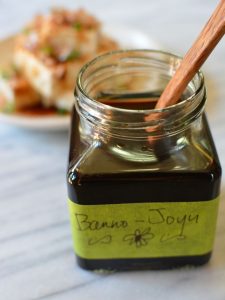


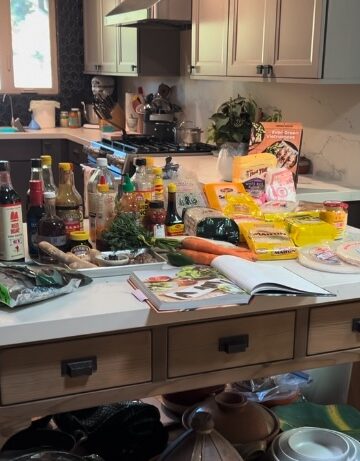
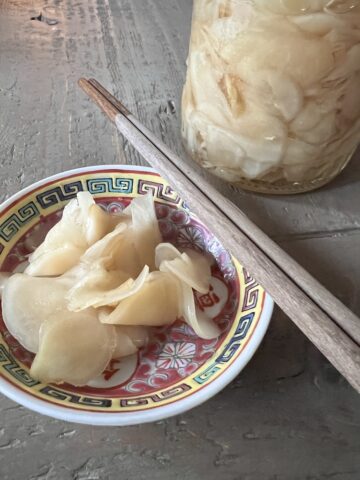
ROBERT FOX says
I only recently found your site, but you have the most interesting subjects. Having lived in Japan and visited Korea regularly, I fell in love with the cuisine and have expanded that love to anything Asian. I have always been amazed at the seemingly endless parade of sauces and condiments and this Banno-Joyu is a wonderful example of that. Thank you!
Andrea Nguyen says
You're so welcome! This is a fabulous stealth ingredient to keep around.
Pam says
Is there anything that a vegetarian can use that can even begin to come close to the bonito flakes? Or other umami producing ingredients.
Elizabeth Andoh says
Try soaking 4 or 5 dried shiitake stems (they actually have more concentrated flavor than the caps; save the caps for other dishes) in a cup of soy sauce with kombu (kelp) for at least 20 minutes, preferably an hour or more. Add a spoonful of sake (or water). Place over low heat and simmer for 5 or 6 minutes. Let the mixture cool in the pan before straining. This will produce a concentrated vegan version of banno-joyu. And you can make a secondary stock from the soy-drenched bits in the same way I describe below.
Elizabeth Andoh says
Glad to hear that seasoned soy concentrate remains a good "friend" in your kitchen!
In the spirit of KANSHA/appreciation and to create even more flavorful condiments in your kitchen, make NIBAN DASHI (secondary stock). After you have transferred the concentrate to a glass jar for storage, DON'T WASH THE POT! Instead, add cold water and re-boil for 2 or 3 minutes. Let that liquid cool before straining out the solids. This secondary stock can be used for soups, dips, dressings. The solids you have strained away have very little flavor left (and often are composted at this point) but... if you want to re-purpose the dashi-gara (bits left after making stock or seasoned soy concentrate) let them dry out and then crush in a spice grinder, and mix with toasted sesame. Sprinkle the confetti-like mixture (furi-kake) on freshly cooked rice: YUM!
Hoping you'll come to visit me again in Tokyo... soon!
Andrea Nguyen says
Elizabeth -- what an amazing tip!! I wondered about about the residue in the saucepan. Love it.
Of course, I'm always on the look out for ways to see you again, preferably in Tokyo.
HL Vietnam says
I'm not really a fan of Tofu but this could convert me! That soy sauce looks delicious, I can't wait to try this one.